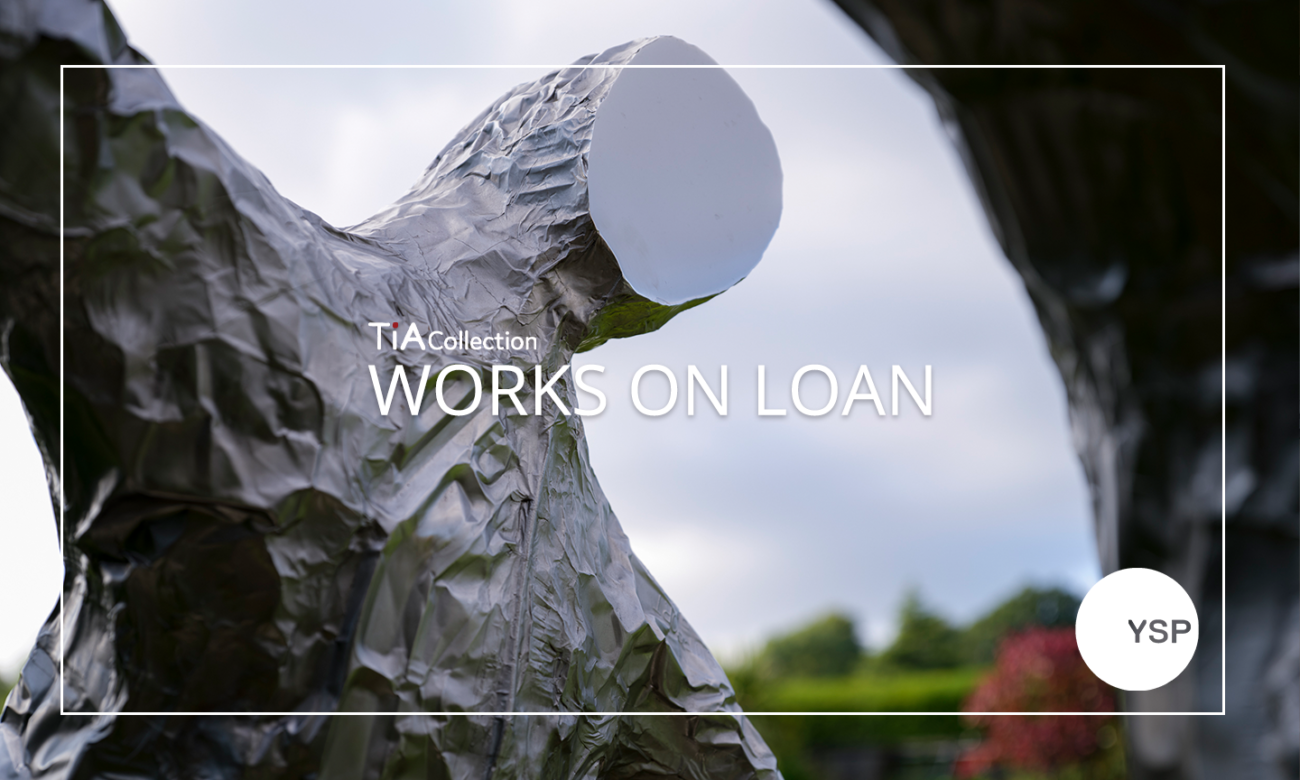Tia Collection is pleased to have three works on loan to Yorkshire Sculpture Park (YSP). Located just outside of Wakefield, West Yorkshire, UK, the Park was founded in 1977 to create opportunities for everyone to experience art in an exceptional 500 acre landscape, and to nurture a creative environment where people feel inspired and welcome. As the birthplace of Barbara Hepworth and Henry Moore, two of the 20th century’s most important artists, YSP celebrates Yorkshire as a center for sculpture, supporting young and emerging artists and bringing the best of international sculpture to this beautiful part of the world. YSP is home to a changing display of around 100 sculptures; permanent works that include James Turrell, Andy Goldsworthy and Alfredo Jaar; an extensive visiting artist program; and temporary exhibitions in five indoor galleries and the 18th century chapel.
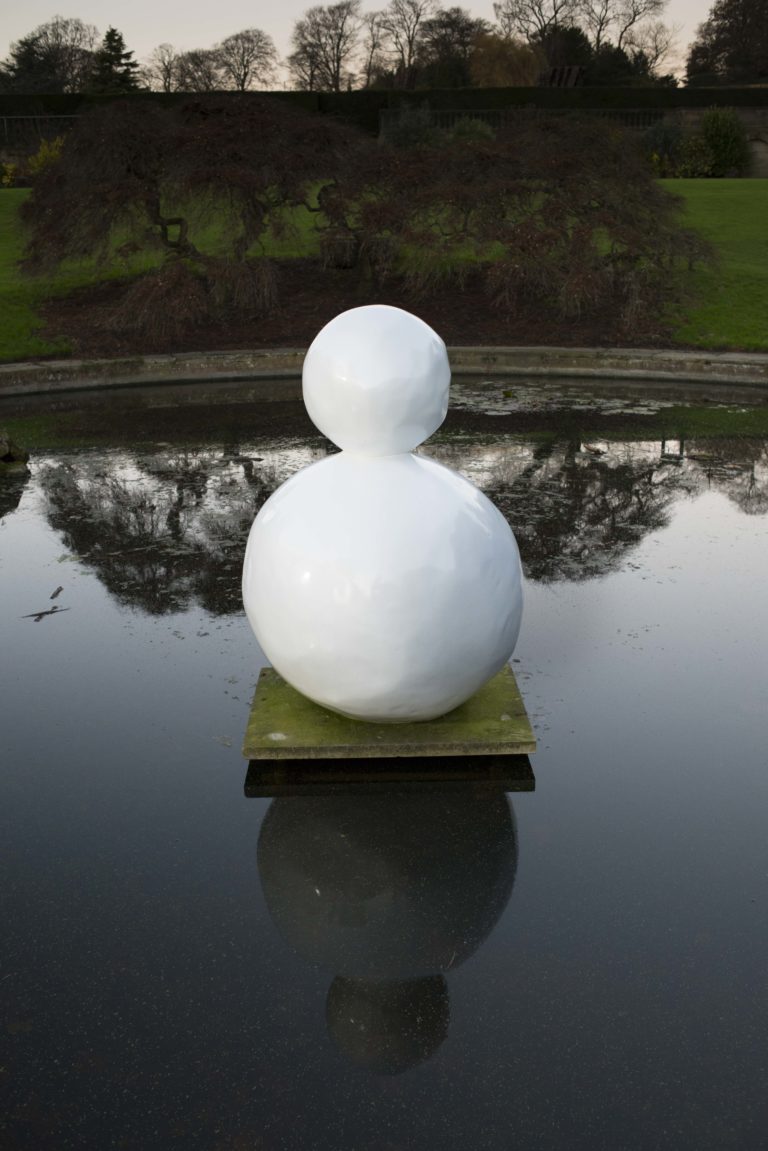
Gary Hume’s Snowman, two balls twinkle white, 2014, is currently sited on an ornamental pond so that the two white forms of Snowman are reflected in the water below. Water lilies and aquatic plants flourish and die back with the seasons, whilst the trees and shrubs in the surrounding Formal Garden change in cycles of growth and decay. This constantly shifting environment impacts Hume’s Snowman, which alters in appearance depending on the light, time of year and the weather.
Hume spent time in Yorkshire building real snowmen, experimenting with dye and food coloring, and photographing the results. He described these experiments as “ready-mades,” a term coined by early modernist artist Marcel Duchamp to describe the method of employing found objects as a foundation for sculpture. Snowman was formed with clay, then cast in bronze with the original handmade quality maintained in its surface contours. By cementing the work in bronze, Snowman connects to thousands of years of art history and transforms the temporary and fleeting nature of snow into something permanent and solid.
Image: Gary Hume, Snowman, two balls, twinkle white, 2014, Tia Collection
Blurring the line between abstraction and representation, Hume often takes childhood images and reduces them to pure forms. Both his paintings and sculpture depict simplified everyday objects and abstract forms using bright, high-gloss industrial paints. Although Snowman evokes feelings of joy in childhood recollections, the sculpture’s featureless exterior may also imply a more sinister reading.
Born in 1962, Gary Hume attended Goldsmiths College in London, graduating in 1988. Strongly associated with the Young British Artists who came to prominence in the 1990s, Hume represented Britain at the Venice Biennale in 1999 and the Bienal de São Paulo in 1996, the same year he was nominated for the Turner Prize. He currently lives and works in London and Accord, New York.
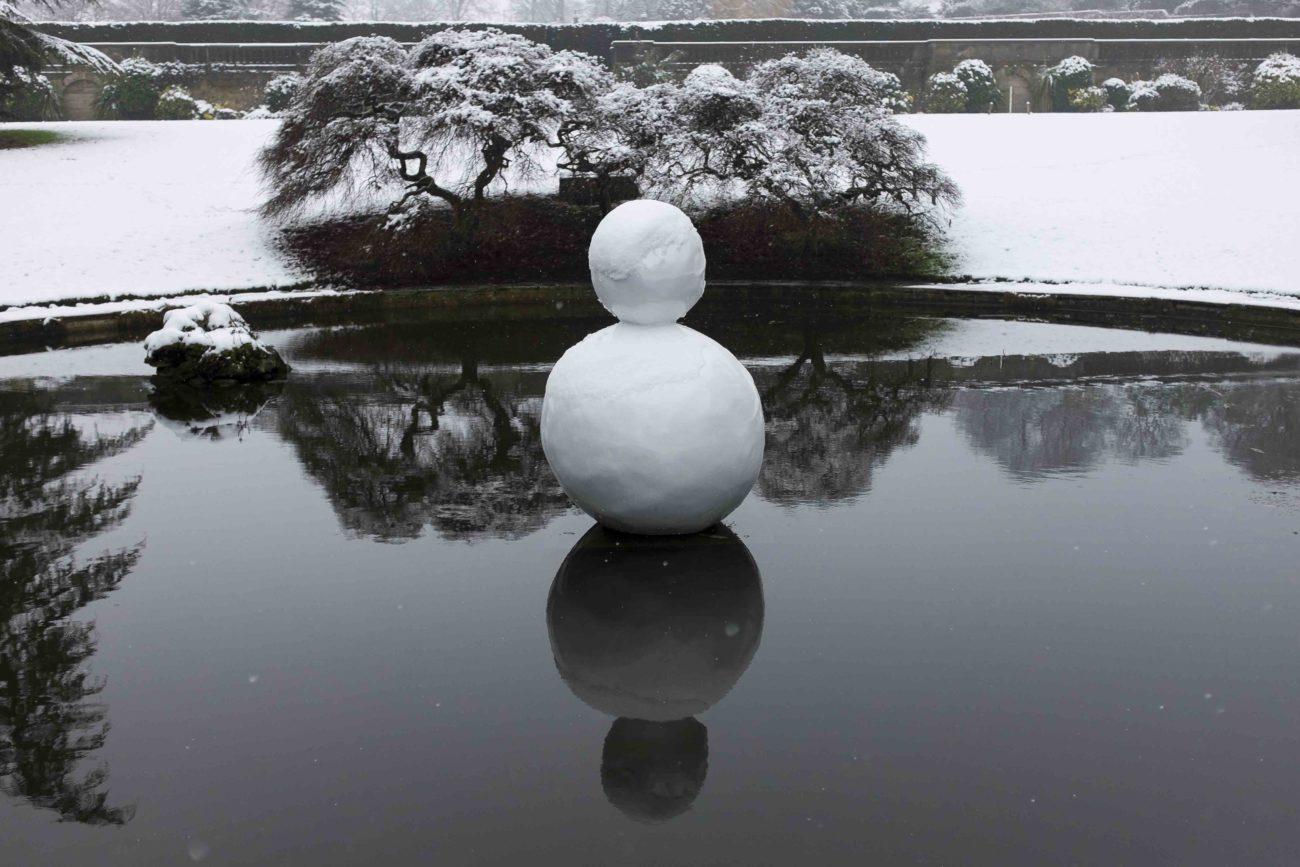
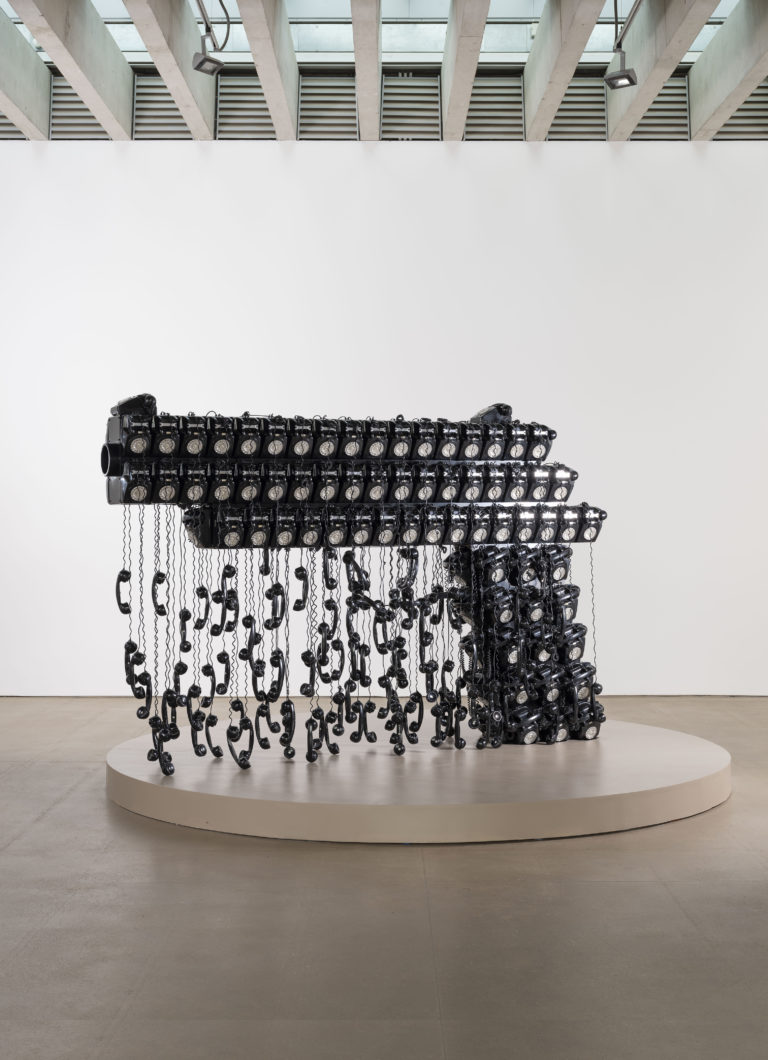
Bringing a version of stereotypical masculinity to the fore, Joana Vasconcelos’ Call Center, 2014-16, takes the form of an enlarged Beretta pistol, the weapon associated with the quintessential charismatic British spy James Bond. Closer inspection reveals that the sculpture is made entirely from rotary dial telephones.
Monumental in scale, Call Center embodies ideas of strength, power and dominance, themes undercut by the fanciful nature of the objects found in the work. Furthermore, the pistol is made lyrical by Vasconcelos’ incorporation of an electro-acoustic symphony by composer Jonas Runa amplified from the telephone modules. The title refers to the call center workplaces developed around the world that preference automated messages and scripts over face-to-face interaction. As such, Call Center prompts viewers to consider their connections and interactions with others.
Image: Joana Vasconcelos, Call Center, 2014-16, Tia Collection
Call Center is on loan to YSP as part of Joana Vasconcelos: Beyond, the UK’s largest-ever exhibition by the celebrated Portuguese artist. Vasconcelos creates vibrant, often monumental sculpture, using fabric, needlework and crochet alongside everyday objects. She frequently uses items associated with domestic work and craft to comment from a feminist perspective on national and collective identity, cultural tradition and women’s roles in society. Here, Call Center is displayed alongside Vista Interior, 2000, a minimalist sculpture containing items associated with domestic life and products specific to 2000.
Born in Paris in 1971, and raised in Portugal, Vasconcelos rose to prominence following her inclusion at the Venice Biennale in 2005 with A Noiva [The Bride], 2001-05, a chandelier made from thousands of plastic-wrapped tampons. She was the first woman to be given a show at the Palace of Versailles (2010), and the first Portuguese artist to have a solo exhibition at the Guggenheim Museum, Bilbao (2018). She was also chosen for the inaugural exhibition at the MassArt Museum, Boston (2020). Joana Vasconcelos lives and works in Lisbon, Portugal.
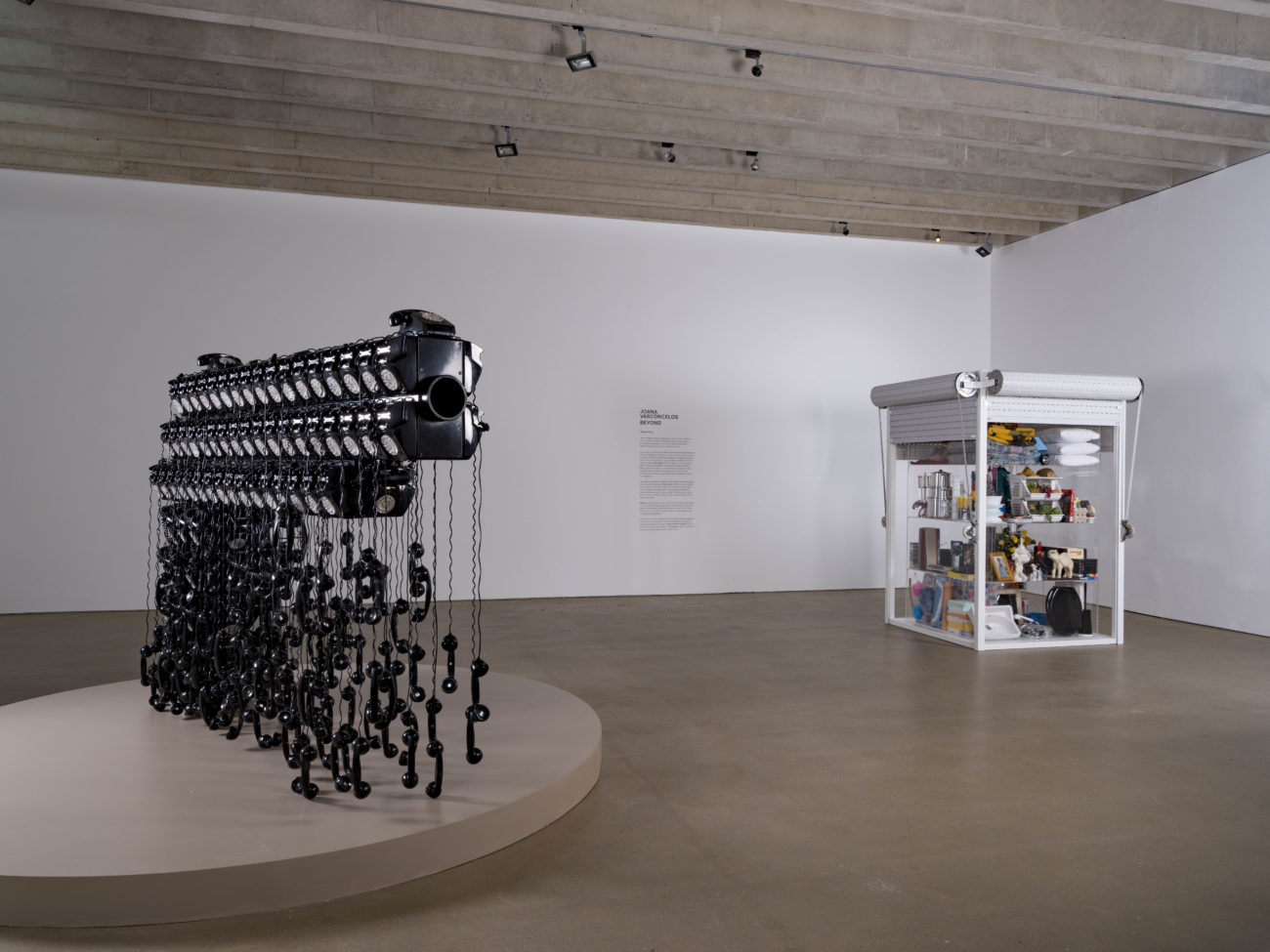
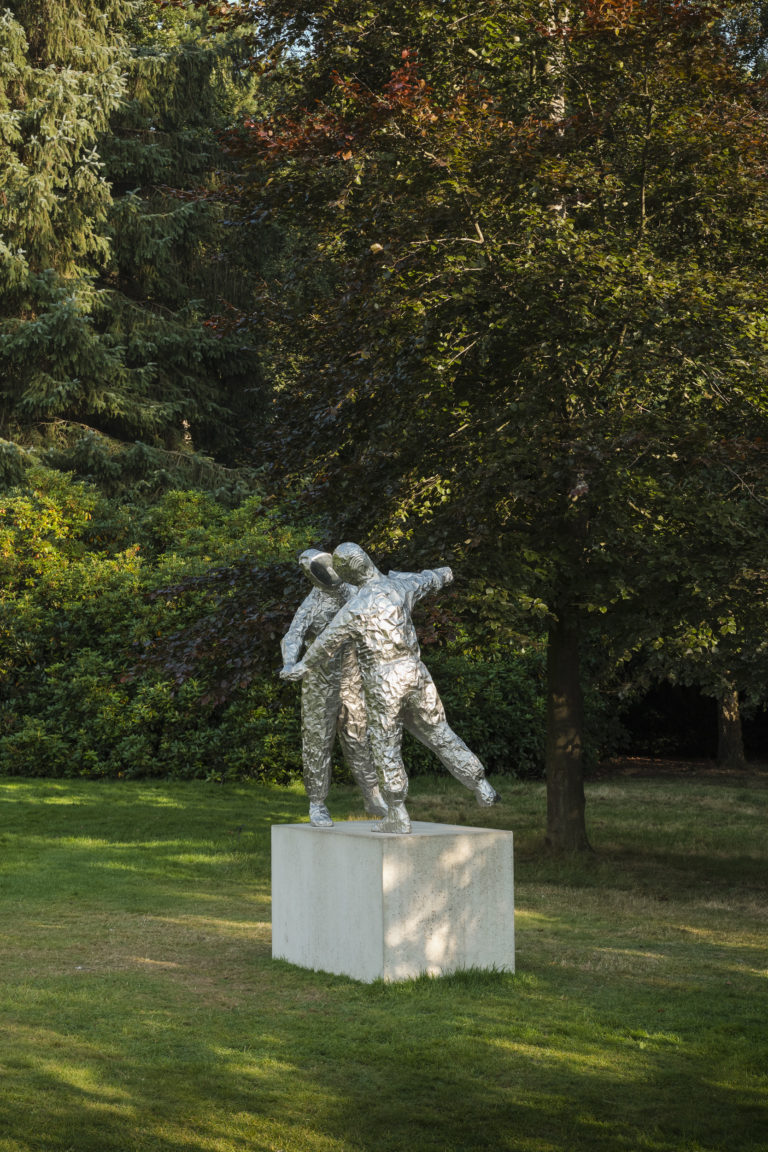
Tom Friedman’s, Hazmat Love, 2017, depicts two figures who might be embracing, wrestling or dancing together. Their ambiguous relationship is further complicated by the denial of facial expressions since their faces are covered by masks of highly polished stainless steel that mirrors the surrounding environment. Connected by their gloved hands, the figures are clothed in hazmat (HAZardous MATerials) suits, implying a sense of danger and threat. Working in a hazmat suit is strenuous, and this is reflected in the sculpture through the heavy and awkward movement of the figures’ limbs. The two individuals are neither adult nor child-sized, which adds to the sculpture’s uncanny sense of illusion.
Friedman uses personal experience to recreate everyday moments tinged with dark humor. Since 2007, Friedman has created small models from aluminium foil, baking trays and takeaway containers – disposable materials that are easily shaped and creased. The foil constructions are then cast in stainless steel and polished to varying degrees. In Hazmat Love, the artist has transformed a US brand of disposable roasting trays into baggy fabric, elastic, boots, and thick gloves. Although he deliberately achieves a mass-produced appearance, the marks, folds and finger depressions made in forming the original aluminum are evidenced throughout the work’s surface.
Image: Tom Friedman, Hazmat Love, 2017, Tia Collection
Hazmat suits are designed to protect the wearer, and to shield humans from disasters. They are used by workers responding to environmental emergencies, spillages and contamination and guard against chemical, nuclear and biological threats. The suits, mask and gloves of Hazmat Love also resemble the protective equipment used by medical staff, researchers and frontline workers to reduce infection during the COVID-19 pandemic. The artist has described the work as a scene of “dystopian romance – love in a toxic environment,” coincidentally connecting to our global pandemic experience. Although the danger that the couple are shielding from is left to our imagination, the metallic figures might exist in a future not so different from our present.
Tom Friedman was born in 1965 in St. Louis, Missouri, USA. He studied graphic design at Washington University, St. Louis, graduating in 1988, before receiving his MFA in sculpture at the University of Illinois at Chicago in 1990. His large outdoor sculptures have been shown around the world and presented at major museums in the United States. He lives and works in Leverett, Massachusetts.
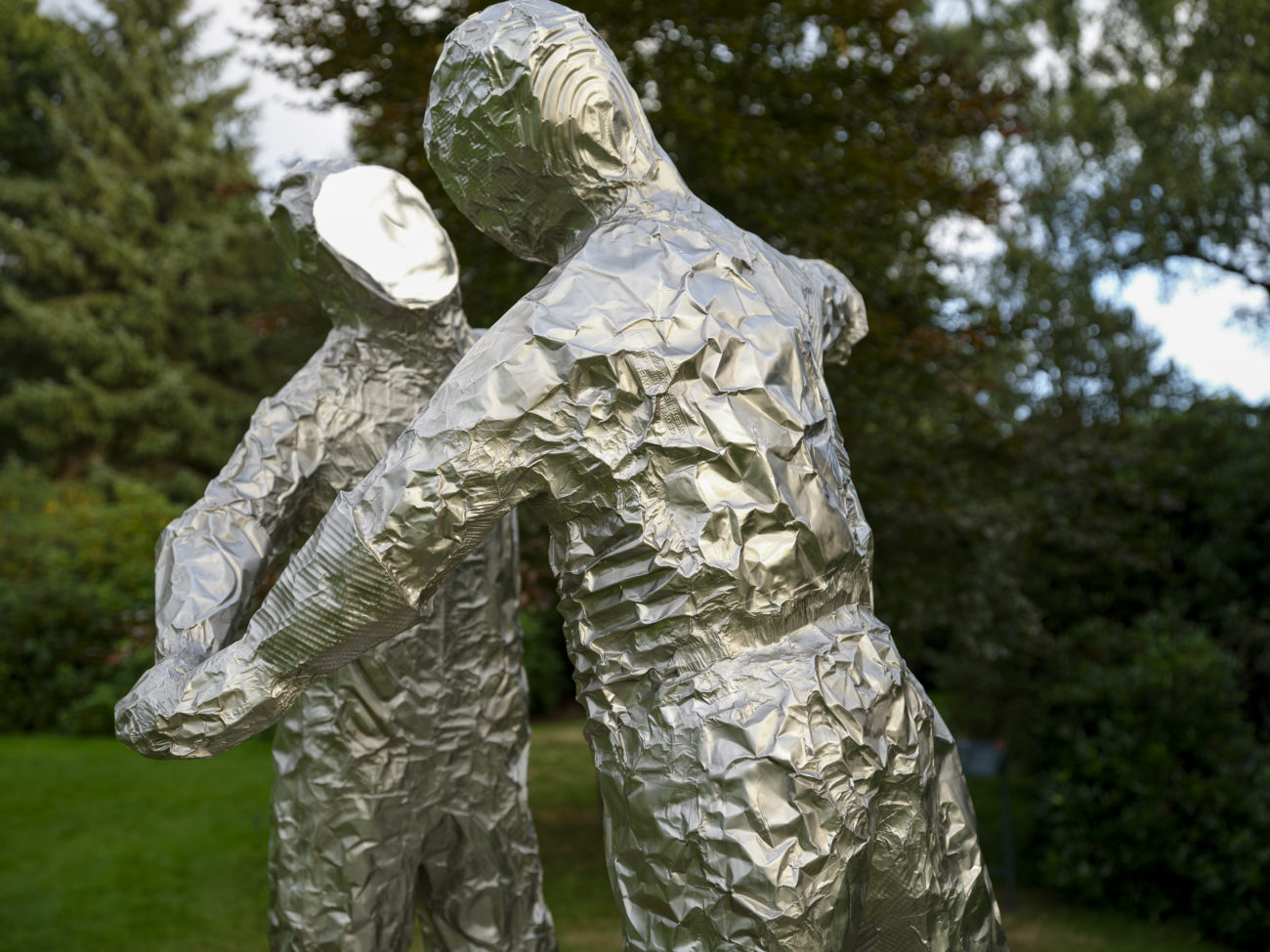
These loans were made possible through the initiative of Clare Lilley, and the YSP Curatorial team, with special editorial thanks to Eloise Bennett. To learn more about Yorkshire Sculpture Park visit ysp.org.uk/
Photography by Jonty Wilde. Courtesy of Yorkshire Sculpture Park.

